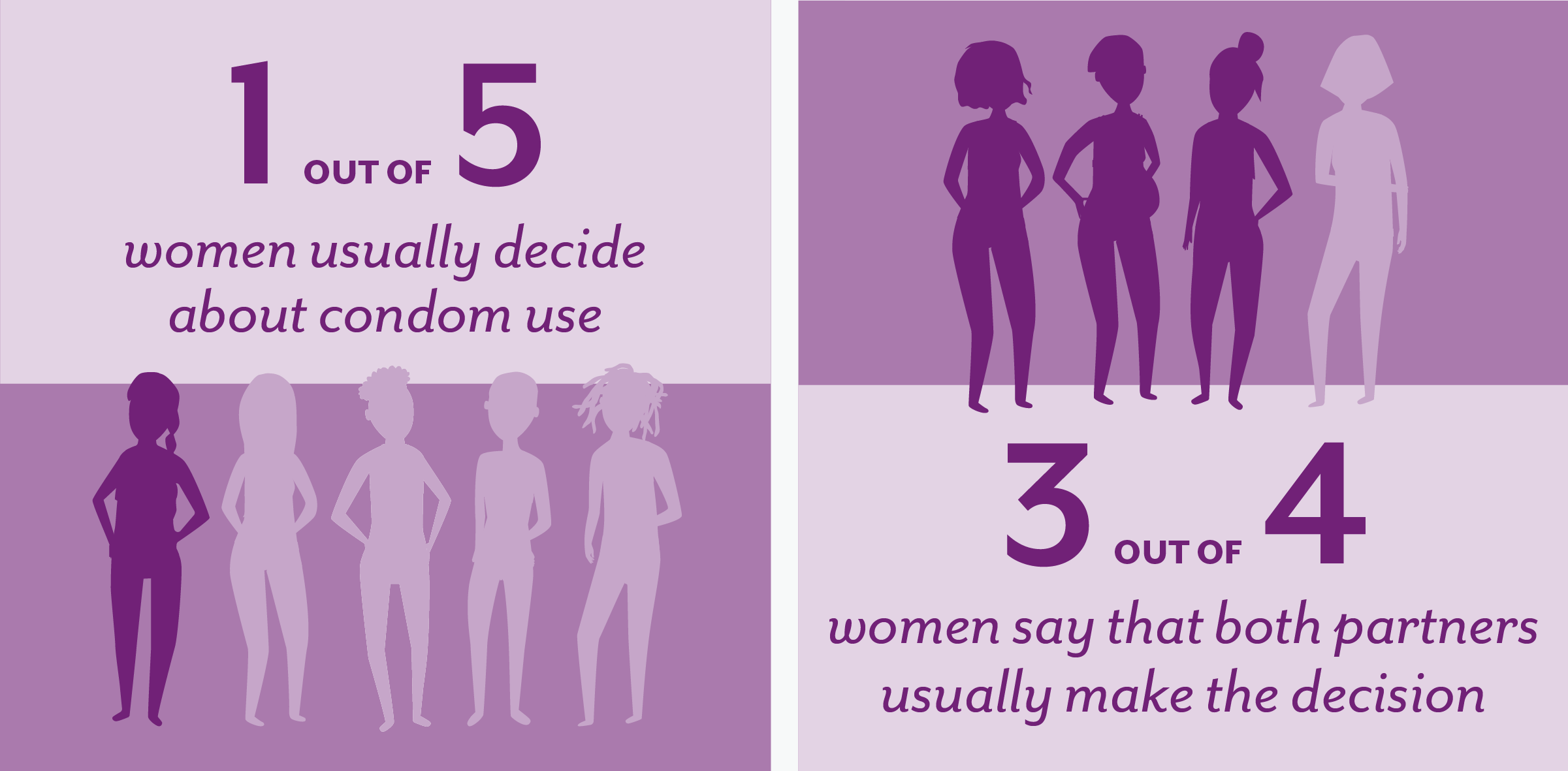Part
01
of one
Part
01
Insights Into The Global Condom and Lubrication Market
Insights on Global Consumer Attitudes to Condom Use
- A recent poll of 135 consumers aged 18-50 in Hong Kong found a higher rate of condom buying amongst females. 68% of all female respondents have previously bought condoms compared to only 49% of males, but 58% of males had received free condoms from various channels.
- Of all the respondents who had not previously purchased condoms, 42% of females claimed they would not be nervous to buy condoms for the first time, compared to 15% of males. 32% of males stated they would not be confident enough to make a purchase.
- Both gender groups had a favorite brand, with Durex taking 63% of the total vote, demonstrating a strong brand affinity amongst condom buyers.
- A 2017 study of just over two thousand young people in the UK aged 16-24 suggested that almost half of sexually active young people do not use a condom when sleeping with someone for the first time. More than one-third of young people think carrying protection is a sign someone is promiscuous.
- The main reasons for condom use were to avoid pregnancy. 58% of respondents claimed they used condoms for this reason, while only 29% said they were used for preventing sexually transmitted diseases (STDs).
- 32% of young adults had never seen a condom in a sex scene on TV or in films and this is thought to influence attitudes to their use. There is still a perception for many that condoms reduce pleasure and fun.
- In the U.S. condom use amongst high school students reportedly fell from 62% to 54% over the ten-year period from 2007-2017. College students condom use was not found to be significantly greater than high school students.
- Some reasons given for the non-use of condoms amongst U.S. students were the high use of other forms of contraception (such as the contraceptive pill), lack of sex education, embarrassment of buying and trying to use condoms, a rise in students having access to unprotected pornographic material along with many others.
- Millennial men and women have both described using condoms as less intimate and uncomfortable during sexual intercourse. Some men feel condoms are unnatural, and women also tend to dislike the somewhat artificial feeling. Even though most condoms contain a lubricant, they are still described as feeling dry.
- In 2018, the Kinsey Institute Condom Use Research Team (KI-CURT) at the Kinsey Institute polled 95,000 people from 200 countries on condom use and menstruation. The focus was on condom use from a female perspective, and was aimed at providing a unique and definitive understanding into women's condom choices and how they are affected by their period and their partners.
- The first key finding was that females played a larger role than researchers expected in deciding when to use a condom. 1 out of 5 reported that they decided instead of the of their partners, whereas three-quarters said the decision was mate together between them and their partners, and only 5% claimed that the male usually decided. This confirms that "male condoms are not always male controlled", and that women play an active role in decision-making.
- Condoms are used less often during menstruation. Of those who had vaginal intercourse when not bleeding in the past three months, 64% reported the use of condoms. This reduced to 49% for those who had vaginal intercourse while bleeding. Common reasons for the drop in condom use were the perceived lower risk of pregnancy, with 30% of respondents claiming they were less worried about it. One in three respondents who were not using condoms during periods also reported that they were unconcerned about catching a sexually transmitted infection.
- Middle-aged heterosexuals with new sexual partners have shown particularly low rates for condom use. A UK study involving heterosexual men and women aged between 40-59 who have or are considering a new sexual partner after the break-up of a long-term relationship, showed they hold beliefs about sexual risk were frequently based on past rather than current circumstances. They also felt that existing sexual health services were geared towards the needs of younger people.
- The study suggested that there was a need to "also address age-specific constraints on risk perceptions by equipping mid-life adults with the skills to negotiate condom use and mutual STD testing with new partners."
- There are many factors for the lack of condom use in this age group. The study found that there was a perception of low-risk, justified by lower levels of infidelity and a self-identity as a “serial monogamist” or “relationship person”, and a belief that new sexual partners would also exhibit the same characteristics. Loss of fertility (due to menopause, sterilization or vasectomy) was also a factor, with condom use typically seen as a low priority due to there being no risk of pregnancy.
- Both men and women in this age group described a feeling of embarrassment arising from discussing and using condoms. Some had issues with the fact they had not used them for an extended period (often decades) and men had concerns that their use could contribute to erectile dysfunction.
- A study investigated the attitudes 36,000 homosexual men aged 12-22 in Brazil with respect to condom use and the prevalence of HIV amongst young gay men. 97% of respondents identified themselves as being aware that condom use was the best way to avoid HIV infection, however the foundations for the non-use of condoms stem from the fear of losing pleasure and virility. The use of unprotected orgasm-related sexual intercourse within the pornographic media are factors that have also had a strong influence on the lack of condom use.
- The main factors associated with the non-use, or infrequent use of condoms while engaging in oral sex are discomfort, decreased pleasure, condom taste, trust in the partner, and a lack of perceived risk.
- First time sexual experiences often saw reduced rates of condom use, and the main contributing factors for this were the lack of knowledge and experience, forgetfulness, lack of availability, and trust in the partner.
- Socioeconomic characteristics and factors were found to be a key influence on condom use. A study in São Paulo of 500 residents, identified that black, low educated and poor people had less knowledge about STD prevention, less access to testing, and lower levels of condom use.
Other Insights
- The relationship between condom use and sensation seeking has been explored in a series of academic studies. Sensation seeking, the desire for heightened feelings and pleasurable experience, was measured on scales of sexual compulsivity, sexual sensation seeking, and non-sexual experience seeking. The study found participants who had high condom use scored significantly lower on the scales of sensation seeking, suggesting that a main contributing factor for not using condoms was indeed a lack of sensation.
- A study from 2016 revealed that condom use amongst homosexual men in America had been declining for the past decade. The greatest increase in sex without condoms was seen in young men, aged 18 to 24.
- Attractiveness was found to influence the intention to use or not to use condoms in heterosexual men. Judgments of attractiveness have previously been shown to influence the character of social interactions, and a recent study sought to better understand the relationship between perceived attractiveness, perceived sexual health status and condom use intentions in a heterosexual male population. The study concluded that the more attractive a woman was judged to be on average, the more likely participants were willing to have sex with her and the less likely they were to intend to use a condom throughout.
- Italy has overseen a significant decline in unplanned births over the past three decades, and there has been some suggestion this could be the result of increased condom use attributed to the rise in condom vending machines (CVMs). CVMs help improve condom availability by minimizing embarrassment in contraceptive purchases. A study examined consumer perceptions toward CVMs and their impact on condom purchasing attitudes and behaviors amongst Italian women. Data suggested participants feel positively toward machines, considering them a convenient purchase outlet, while also noting barriers and facilitators to machine use, offering improvement opportunities for consumer behavior researchers, marketers, and machine retailers.
- Other factors known to affect condom use include lack of experience, prior condom breakage, poor fit, discomfort and irritation, difficulties applying and removing condoms, and the use of oil based lubricants.
- Research has indicated that the majority of condom purchases are made in advance, and are less likely to be spur of the moment decisions or purchased when the user intends to have sex immediately. This presents marketers with a significant opportunity to influence consumers purchasing decisions with factors such as brand choice and availability, packaging, pricing and more.
Condom Marketing Trends and Practices
- Durex is a UK-based leading global condom brand. Known as much for its social impact, such as programs supporting gender equality, the brand operates into three main product segments, condoms, lubricants, and sex toys. The brand is well-trusted and well-known for being hygienic, while it's products are sold in more than 152 countries, and the company tailor their branding campaigns accordingly to suit differing attitudes towards sex in different countries and regions. Durex helps its front line distribution by producing its offerings throughout 17 manufacturing plants across the globe, and leverages the use of a wide range of sales channels such as store retailers, wholesalers, e-commerce sites, supermarket chains and more. As much as 50% of Durex sales are from e-commerce.
- The core part of Durex marketing strategy revolves around having high 'Top of Mind Awareness' (TOMA), this being the brand's ability to be one of the first that comes to consumers minds when they think of condoms or lubricants. Durex also pay particular attention to the idea of being more than just a condom brand, and actually caring for the emotional as well as the physical aspect of sex.
- Customers of Durex are primarily 18-30 years old, who are at the beginning of their sex lives and consequently are comparatively inexperienced. They use condoms primarily for the functionality of avoiding STDs and unwanted pregnancy, as opposed to over 30s who look to Durex products for comfort and enhanced sexual enjoyment.
- An example of the tailored approach to suit different cultures can be seen in some of Durex marketing campaign successes in China. China is the fastest growing consumer of Durex products, and their biggest online market. Despite being the biggest market, the penetration rate of Durex condom products in China was one of the lowest of all their markets, making the region an ideal place for digitally innovative engagement. Some main challenges for Durex were the cultural traditions of China, which until historically banned condom advertising on television, and this happened to be one of Durex most successful global channels.
- A social media campaign to increase brand visibility began when a Durex social media team member in China put one of their condoms over his shoes, and quickly discovered they also worked well as protection from rain. Pictures were shared online, and this quickly became an online viral trend. Durex seized on the opportunity, suggesting condoms could be used as shoe covers during bad weather. This became some of the fastest growing and most popular online content and created tens of millions of impressions and increased brand visibility.
- Durex launched 2020 campaign entitled '#LadiesLetsLube'. The campaign aimed to take advantage of English language cultural uses of the word 'moist'. Moist is a word used to describe the presence of moisture, but it does have negative connotations because due to its association with undesirable bodily fluids, such as sweat, urine, or vomit, and also being associated with the unpleasant presence of damp inside buildings. Durex sought to re-associate the word with the sexual arousal of woman, and the use of their lubricant products to enhance these pleasures. The campaign features billboards and other large advertisements which leverage use of the word for dramatic effect, creating impressions amongst consumers.
- Similar billboard campaigns have brought attention to the ideas of 'normalizing' being able to talk freely about sex and sexual health matters, and making more positive decisions about sexual health testing.
- A recent online report identified six key factors for Durex success in creating long-lasting digital engagement content. The first was that Durex are extremely successful at creating humorous, sexually suggestive and often subtle advertisements. With strong use of the puns and double-entendres, the brand "maintains a tonality of kinky, playful and oh-so indicative content", whilst "positioning itself as a one-stop destination for all sex related conversations". Secondly the content they create is often short, sharp and very direct which suits the current generation, where speed and instant access and understanding is at the heart of digital technology. Thirdly their content is often educational, both in terms of sexual health, and pleasure. Durex also utilize current social media and digital technology tools and trends, such as the use of emojis in previous campaigns. Durex content is always highly topical and relevant, and lastly Durex leverages the use of brand ambassadors.
- In 2018, Durex used a memorable April Fool's campaign to build brand awareness in UK, showcasing a new product which was later revealed to be an April Fool's hoax. Tapping into then current and prevalent issues concerning British patriotism, the company decided to showcase the idea of British identity with three new condom flavors centered around British traditions. The flavors were Sunday Roast, Fish & Chips and Chicken Tikka Masala. A range of assets were created to promote the products and support the campaign, including product images, blogs and press releases sent to over 100 high profile sites. Content began being shared virally by a series of high profile accounts, and images from the campaign were turned into memes, rendering the campaign a huge success.
- In the digital age, marketing condoms to millennial presents a unique set of challenges. Some studies suggest that as technology has increased, digital connections have increased, but conversely more physical and intimate connections have decreased. Millennials also have behavioral traits which are changing distinguished from previous generations.
- Millennials are more likely to meet each other via digital connections such as dating and mobile apps. This has led to practices which typically result in brief short encounters, with research suggests this group are having less sex than previous generations, and that 4 in 10 women prefer pleasuring themselves alone to having sex with a partner. SKYN's main challenge appears to be marketing to a demographic that is becoming increasingly disconnected from physical closeness and sexual intimacy.
- SKYN is a premium condom and lubricants brand created by LifeStyles Healthcare. They place strong emphasis on the feeling their products have during sexual intercourse. Their slogan is "Feel Everything", and the brands name is associated with the feeling of skin. Their condoms are made with a unique, non-latex substance designed to allow users to 'feel everything', and their slogan is designed to also be a "liberating message" for millennials. SKYN have recently launched three marketing campaigns, designed to capture the attention of their "intimacy-averse, technological, sexually progressive target demographic".
- The first is title 'Save Intimacy'. A combined digital and social campaign, the brand have released a video depicting a dystopian and not-too-distant future where technology has taken over human interactions, and smartphones, VR and technological innovations have replaced sexuality. The campaign is designed to work in two ways. First it reinforces the innovations of SKYN technology, in the form of their ultra-soft and thin non-latex polyisoprene condom material. Yet the brand also brings to light an uncomfortable, yet irrefutable fact that technology is both encroaching on and consuming all aspects of daily life, including bedroom time.
- In November 2017, Australia held a historic referendum on equal marriage, in which its citizens were given the opportunity to vote ‘Yes’ or ‘No’ on legislating marriage equality. SKYN seized on the opportunity to create a tie-in campaign titled 'Yes, Yes, Yes!', in one of its biggest markets, where they hold a greater than 70% share of the Australia condom market. A 20-second video was produced where supporters of marriage equality cry “Yes!” to the camera, which are edited to become progressively faster before building to a triumphant climax. After 61.6% of voters cast their votes in favor of equal marriage, SKYN celebrated by offering a corresponding 61.6% discount on all its products. The resulting surge in traffic to SKYN’s online store completely crashed its website and the company experienced strong brand exposure and revenue gains resulting from the campaign.
- 'Places of Intimacy' was a recent marketing campaign which set out to promote a message of sexual adventurousness and finding “love everywhere”. The campaign was targeted at “serial monogamists”, a group which SKYN describes as, “millennials who seek intimacy as a means of forming deeper human connection”, and was built around the notion that intimate memories are intrinsically linked to the places in which they’re formed.
- To illustrate this idea, SKYN held a contest to find 12 couples with strong sexual chemistry, who were then sent out to experience some of the most intimate locations around the world, and write about their exploits. In the end, 30 winning locations were selected as the most intimate locations in the world for couples to visit. SKYN, working in partnership with GQ, compiled the stories from these locations into a coffee table booklet. The booklet was translated into seven languages, and distributed in hotel lobbies as a unique, erotic twist on modern travel guides, as well as being made available to read and download from a dedicated micro site. This wide-ranging campaign resulted in approximately 1.2 billion impressions globally.
- One of SKYN's most recent campaigns aimed to capitalize on the global COVID-19 lockdowns mandated as a result of the coronavirus pandemic. Bluntly titled 'Stay The F*** At Home', the brand created social media campaigns for Instagram, Facebook and Twitter, playing on the 'stay at home' message and utilizing the title in a social media hashtag. Content included daily ‘pleasure calendars’ posted frequently over a period of several weeks, as well as messages such as, ‘When you can’t touch others, touch yourself’ and, ‘Quarantine giving us one more reason to moan'. The brand believes the initiative advocates being positive and making the best from negative situations, as well as seeking to remind people that it is possible to turn restrictive measures into something that brings togetherness.
- Although most condom branding and marketing is aimed at men, significant volumes of condoms buyers are actually women, and in the case of leading condom brand Trojan, this number can be as high as 40%. This new emerging demographic, along with the current trends, attitudes and lifestyle choices of condom users mean that the condom market is increasingly becoming aware of the need to address politically correct notions and develop sustainable business practices which consider environmental issues.
- Sustain are a socially-conscientious brand selling products for use before, during and after sex, ranging from condoms to organic lubricants to “post-play” wipes. In 2014, Sustain developed a new strategy, aimed at targeting and appealing specifically to women, while acquiring their latex and raw materials from sustainability-certified forests and manufacturing in factories with significant fair trade policies. Sustain focused on selling a range of female-centric prophylactics products online and in natural-pharmacy chains and health stores.
- By developing products aimed at and for women, Sustain has been able to address issues with sexual health and contraceptive use that specifically affect women. Common spermicides and fragrances have ingredients that can really irritate women’s bodies for example, and Sustain have leveraged the opportunity to both research and develop products which are better suited to women's physical and sexual health needs.
- Sustain began as a family run company, founded by socially conscious business pioneer Jeffrey Hollander, his lawyer wife Sheila, and their NYU Stern business school grad daughter Meika. Hollander had developed the idea for a sustainable condom company up to 20 years previously, and had even gone as far as to trademark the name 'Rainforest Rubbers'. Leveraging their own personal families experiences, such as their understanding of the difficulties parents have providing an environment where they can easily talk and communicate with their children about contraception, as well previous business experience, helped the family understand the specific challenges of the industry.
- The decision to market the condom to women was not only made due to the fact that 40% of condoms were purchased by women, but also based on detailed research which confirmed that women strongly disliked the process of buying condoms. The sustainability factor was also known to resonate more with women. Based on information that only 19% of sexually active single women aged between 22-44 were using condoms regularly, Sustain organized a survey of 500 women, and asked their opinions and feelings on condom brands, their purchasing habits, and where they would like to purchase condoms. Learnings from the research indicated that packaging was critically important to women, who were really impressed with beautifully designed and creative packaging. Women would prefer to purchase condoms online, or when they were buying personal care and beauty products, and disliked buying them in pharmacy or drugstore-type environments, which they felt drew attention to the act.
- Sustain also believe that they have benefited from a very subtle approach. Compared to other brands who can come across as more aggressive or direct, Sustain focus on engaging consumers by being fun and clever, focusing more on the contraception and health rather than the actual sexual element of condoms. The aim is to make Sustain more of a lifestyle brand, rather than simply a condom brand. The name 'Sustain' also resonates slightly differently with women, as men tend to associate the word with being able to last longer during sexual intercourse. Women, who are the specific target audience for the brand appreciate the name for its association with environmental benefits.
- Sustain has developed a highly successful reputation as an eco-friendly, non-toxic and vegan brand, making a positive contribution to environmental issues, and helping to change attitudes towards and the perceptions of condoms, while addressing the needs of women in ways which had previously not been achieved.
iv) Other Marketing Practices
- During the 2020 COVID-19 pandemic, leading condom brand Trojan overcame challenges around lockdowns and a decline in condom revenue by employing creative messaging, engaging and encouraging consumers to safely pleasure at home. Encouraging lonely singles to ‘sext us instead’, the campaign simply invited consumers to 'slide into Trojan’s DMs with an eggplant emoji' for a chance to be sent free vibrators and lube.





